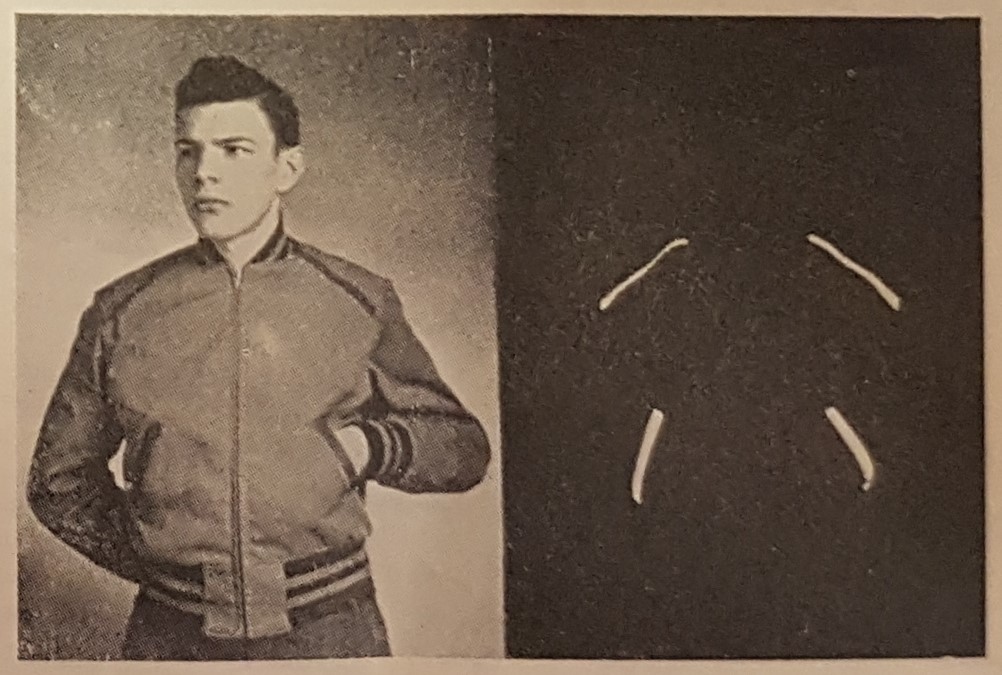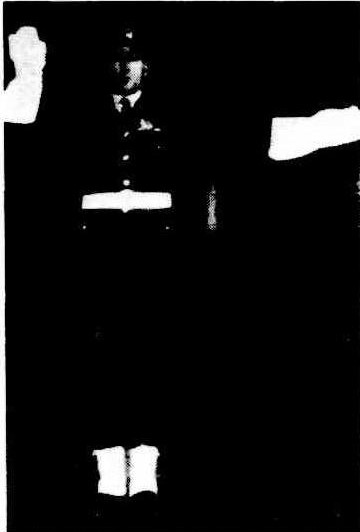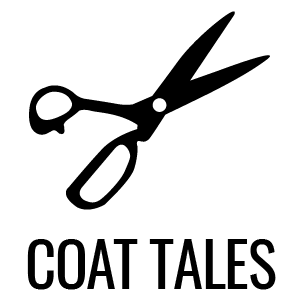Those who exercise at dawn or dusk will almost certainly wear sportwear with reflective strips – at the ankle or calf, perhaps down the back or across the wrists. So commonplace are reflective trims that you might not be aware of them at all.
But in December 1947, Australia’s Tailor and Men’s Wear magazine reported with excitement of a new reflective material developed in North America. ‘You Can See It At Night!’, the article’s title exclaimed of the revolutionary cloth which contained ‘millions of tiny glass spheres which reflect back to the sources of light, such as the headlights of an automobile’.
The magazine explained how it was durable and waterproof. It could be washed or dry cleaned. The glass spheres were so small that they could not be pried from the cloth and nor could they be crushed. No difficulties had been reported with sewing the cloth, for example, with needles breaking.
To help its readers better visualise the effect, Tailor and Men’s Wear printed two photographs of a young man wearing a fashionable zip-front sport jacket. In the first he stands with a hand in one pocket. In the second photograph, plunged into darkness, only the reflective strips across the shoulders and at the pockets are visible.

The reflective fabric, Scotchlite, was produced by Minnesota Mining and Manufacturing Company – the company now know as 3M (you might be familiar with their Post-It notes).
By 1949, Australian newspapers noted how Scotchlite was increasingly used in America for a range of applications: from street signs and hoardings, to policemen’s gloves and pedestrians’ raincoats. ‘This Material Almost Defeats Darkness’, ran one headline. Another less dramatic and more pragmatic noted ‘American Idea is Practical’. A third headline, ‘Glow at Night Like Fireflies’, painted a vivid picture of just how visible a person could be – even on the darkest night – with Scotchlite cloth trims.
Whatever the headline, there were clear applications for the fabric in Australia, particularly for workplace safety. Initially demonstrated for police use, for highway departments, railways and tramways, such reflective fabric was a forerunner to the high-visibility workwear now essential in many Australian industries.

References
‘Glow at Night Like Fireflies’, News (Adelaide), 30 July 1949, 9.
‘He Wants to See Police “Lit Up”’, News (Adelaide), 20 July 1954, 15.
‘New Light Reflecting Material’, Daily Advertiser (Wagga Wagga), 25 January 1949, 6.
‘New Tests on Safety’, The Mail (Adelaide), 24 July 1954, 3.
‘Safety Clothing To Be Tested’, The Advertiser (Adelaide), 21 July 1954, 3.
‘This Material Almost Defeats Darkness’, Border Watch (Mount Gambier), 29 January 1949, 10.
‘You Can See It At Night!’, Tailor and Men’s Wear 2:12, December 1947, 13.
‘Timeline of 3M History’, 3M: https://www.3m.com/3M/en_US/company-us/about-3m/history/timeline/
